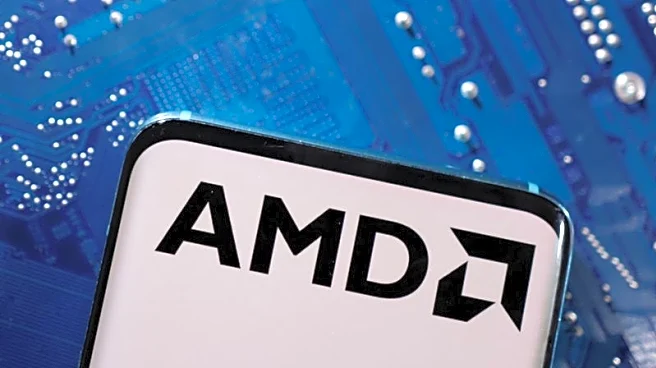What's Happening?
CoreWeave, backed by Nvidia, has revised its annual revenue forecast due to a delay at a third-party data center partner. The company now expects 2025 revenue between $5.05 billion and $5.15 billion, lower
than its previous projection of $5.15 billion to $5.35 billion. Despite this setback, CoreWeave's third-quarter revenue more than doubled to $1.36 billion, surpassing analysts' estimates of $1.29 billion. The company has secured significant contracts, including a $14 billion deal with Meta Platforms and a $6.5 billion agreement with OpenAI, highlighting the growing demand for AI cloud services.
Why It's Important?
CoreWeave's adjustment in revenue forecast underscores the challenges faced by companies in the rapidly evolving AI cloud services sector. The delay at the data center partner highlights potential vulnerabilities in infrastructure dependencies. However, the company's strong third-quarter performance and major contracts with tech giants like Meta and OpenAI demonstrate its pivotal role in the AI industry. This development could influence investor confidence and impact CoreWeave's stock performance, which has already more than doubled since its public offering.
What's Next?
CoreWeave plans to significantly increase capital spending next year, with expectations to spend between $12 billion and $14 billion. This aggressive expansion strategy aims to bolster its cloud infrastructure to meet the growing demand for AI services. The company will need to navigate challenges such as rising AI chip prices and increased competition for computing power. Stakeholders will be closely monitoring how CoreWeave addresses these issues and whether it can maintain its growth trajectory.
Beyond the Headlines
CoreWeave's transformation from a large-scale Ethereum miner to a key player in AI cloud services reflects broader industry trends. The shift from crypto mining to AI infrastructure highlights the evolving landscape of technology companies adapting to new market demands. This transition may have long-term implications for the tech industry, influencing how companies leverage their existing resources to capitalize on emerging opportunities.












